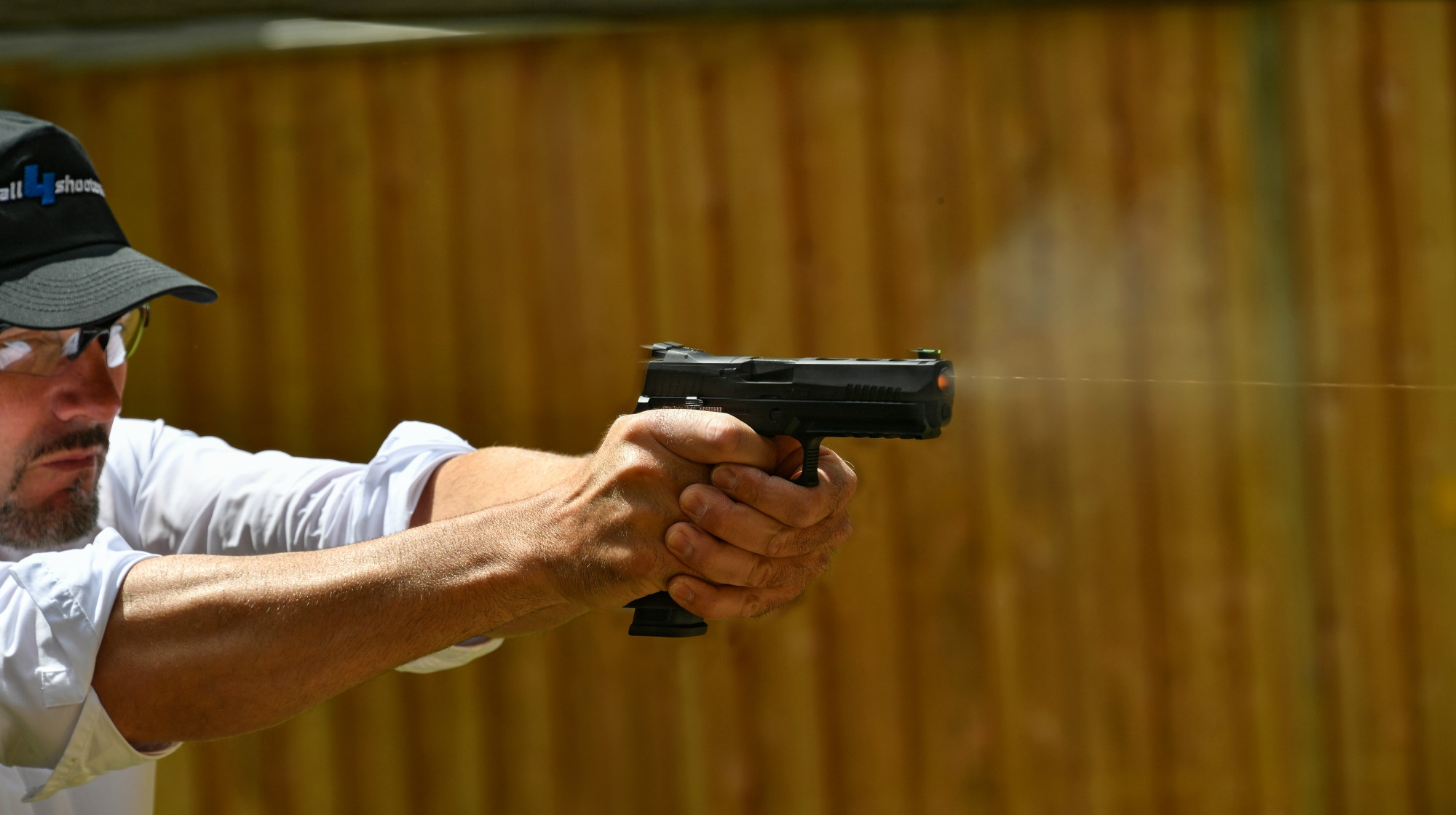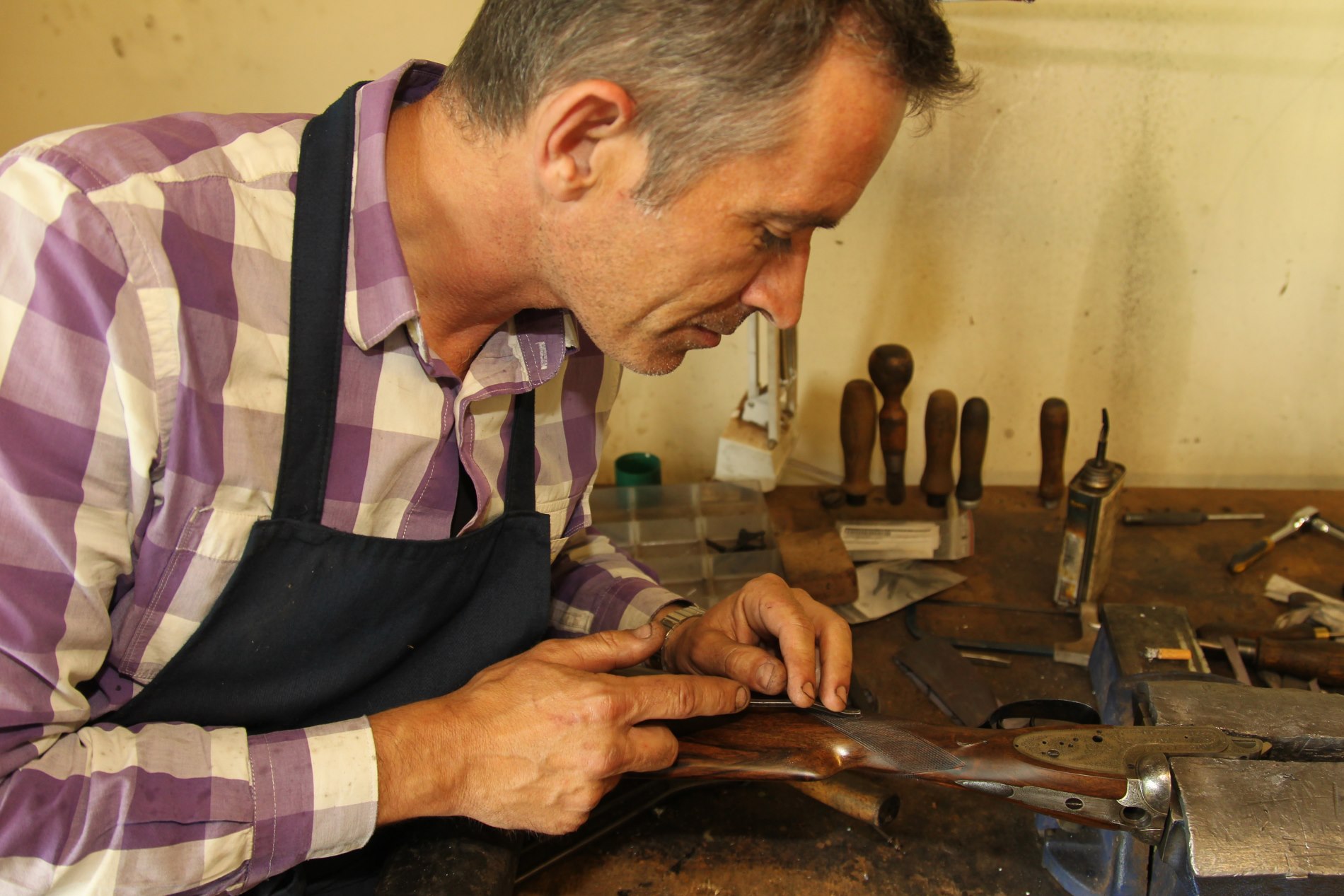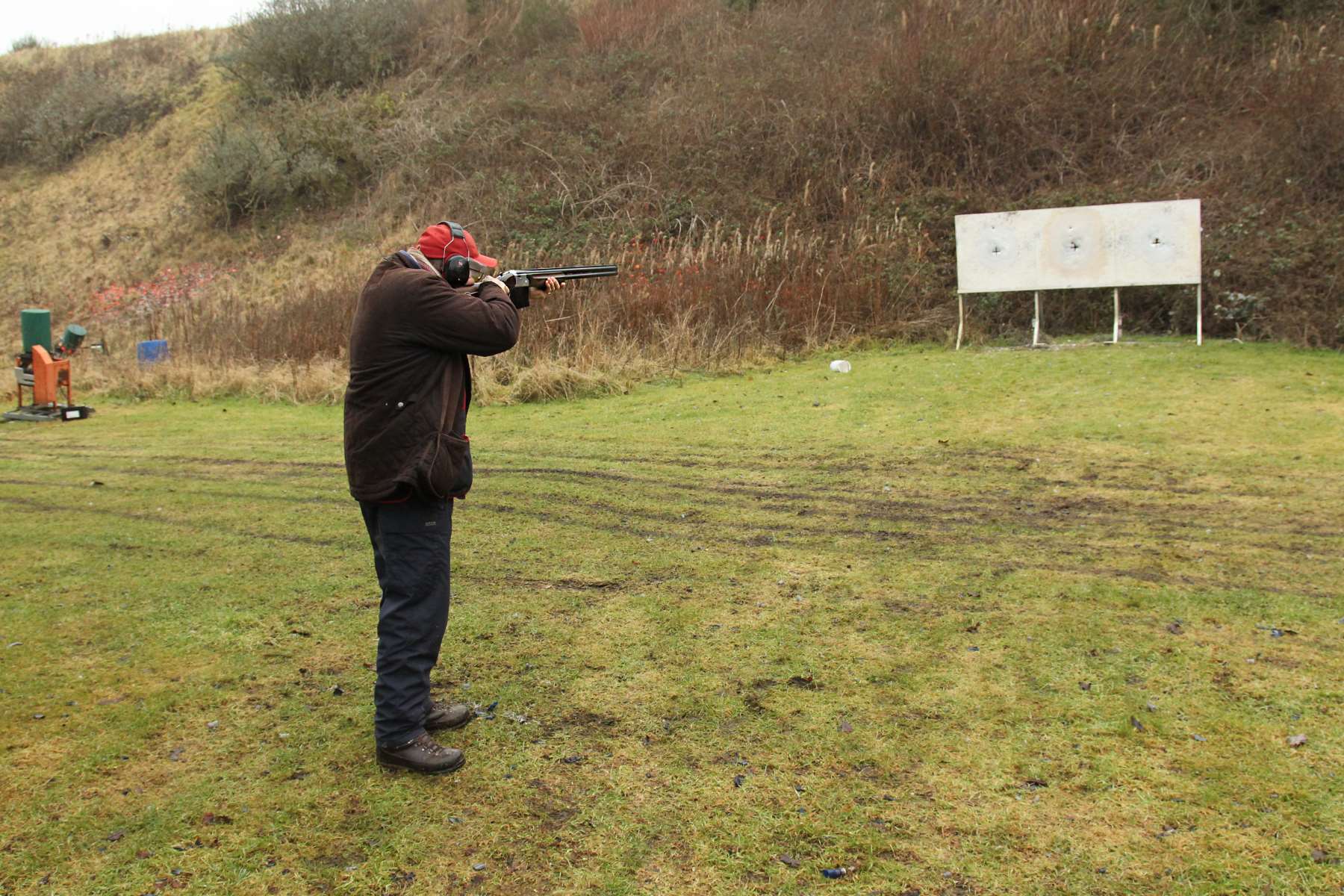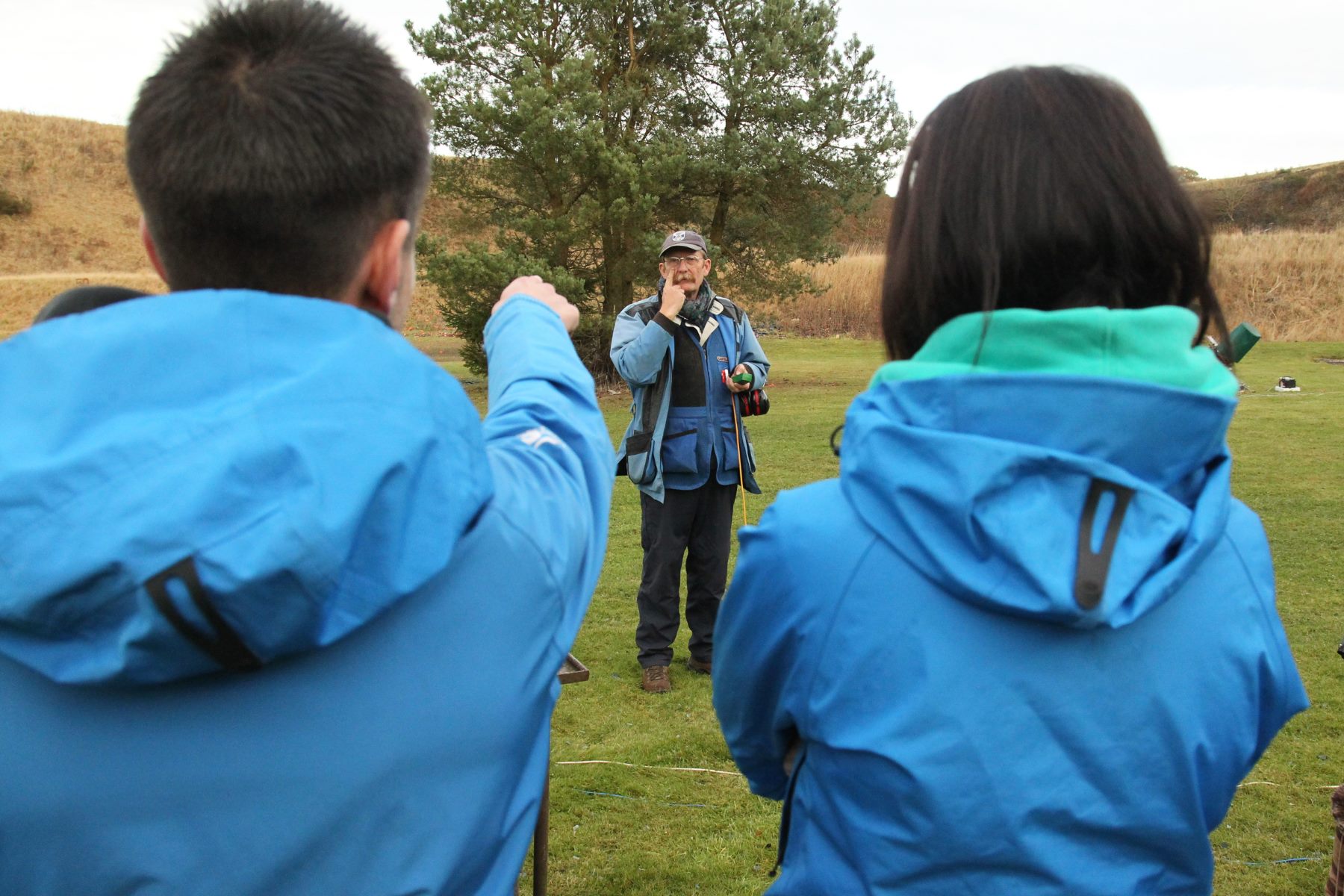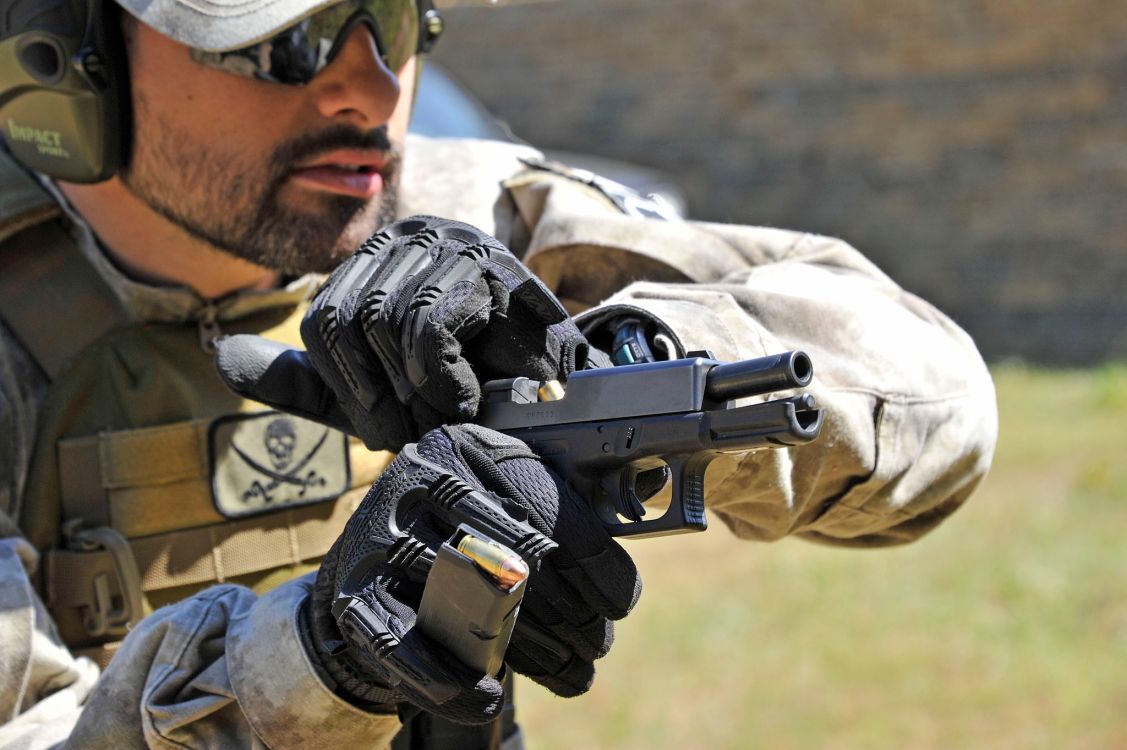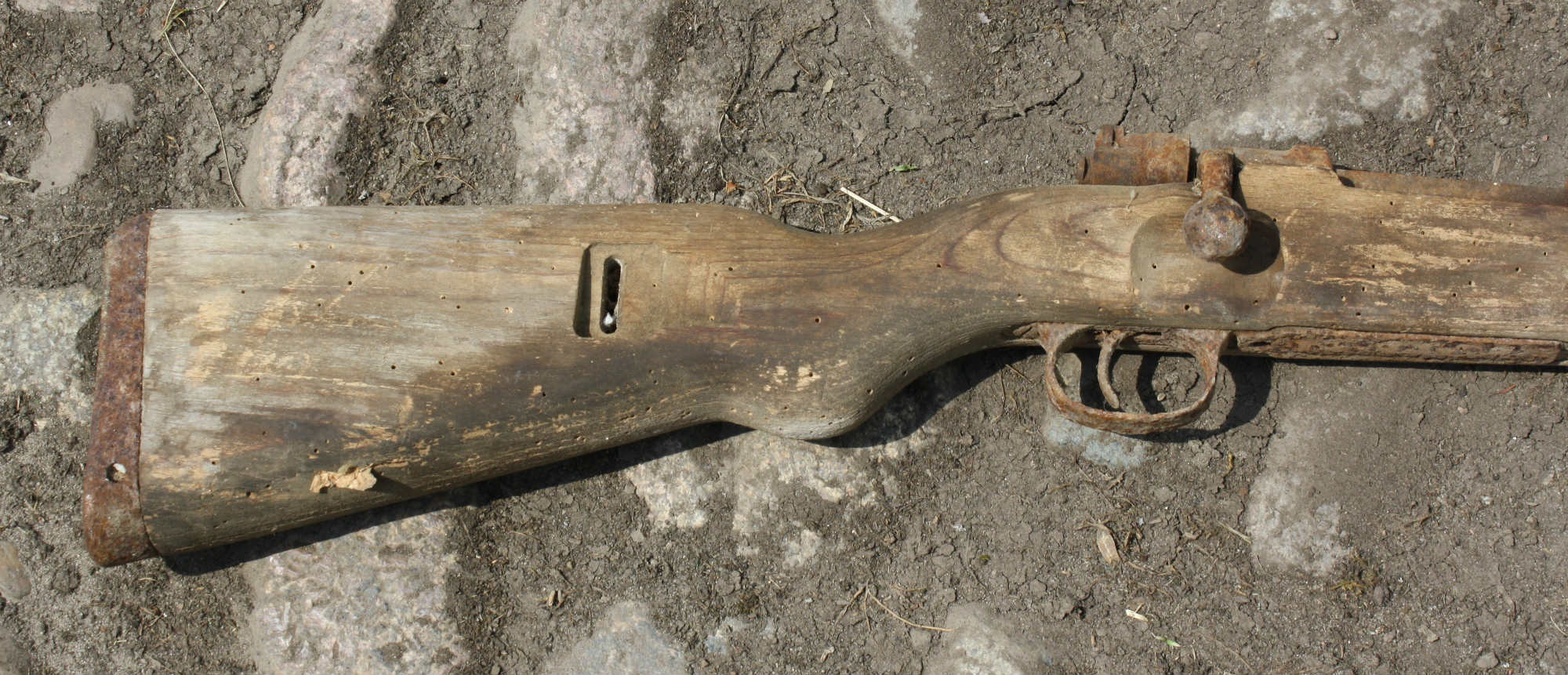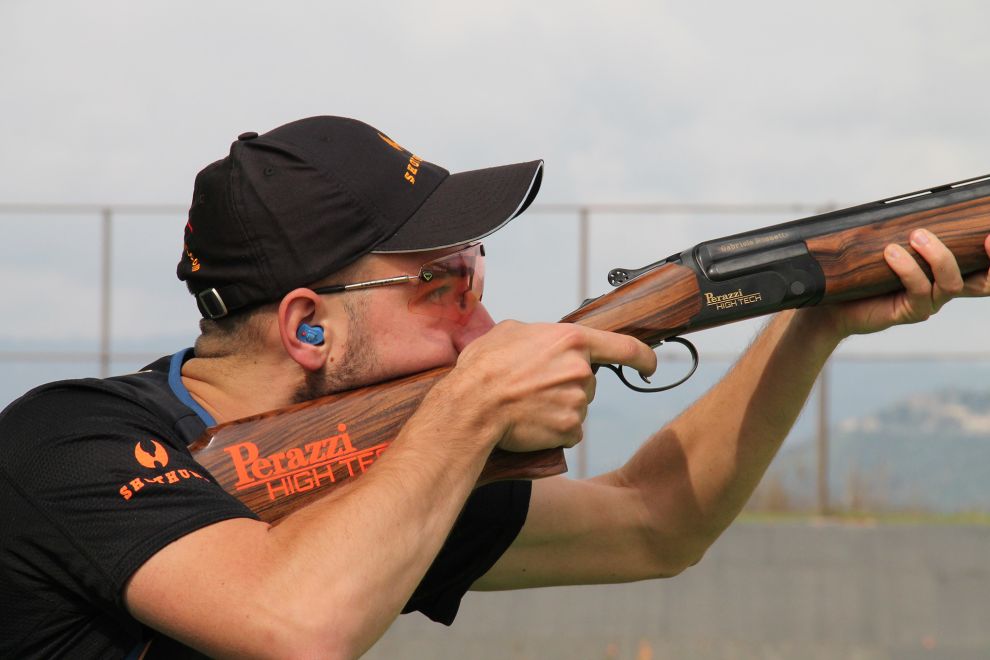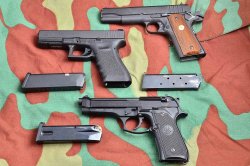
Beretta 92 series, Government 1911 model and Glock 17 are some of the most famous and common guns in the world. Each of these models has many admirers and harsh critics. All three pistols use different mechanics, shooting mechanisms and different calibers, even though we used the classical .45 ACP and the 9 mm (parabellum or the strange 9x21 used in Italy).
The 9 mm caliber statistically has the same power of one shot stop of .45 ACP but it also guarantees larger autonomy of fire of the pistols that use double-stack column magazines. If used in urban areas, the particular kinetic energy present in both calibers, especially in full metal jacket version, tend to bounce off from the target and have a very strong living force, in this way causing unpredicted incidents.
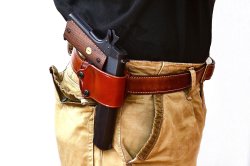
We wanted to let go of the ever-lasting stories about these guns – narrated by various pens and now – computers, and try to see if the two older models can still serve their purpose.
The three full-size gun models are made to be used by armed forces and carried in external and visible holsters. Especially in the summer time, we cannot hide any of these guns under our clothes unless we want to use a hidden inside holster in appendix carry mode. This system, that many people have problems getting used to, is the only system that allows you to hide the gun well. The inside holster makes it uncomfortable to carry the gun if you think about the length and the width of the gun. You will be particularly uncomfortable if you are sitting down.
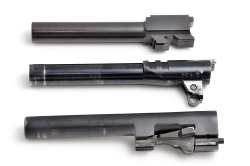
In respect of Colt’s 1911 .45 ACP caliber tradition, we will start with this particular model. This pistol is still admired by many Americans and many other shooters around the world. Even though it is a century-old model, the gun seems very modern. It is mostly because of its ergonomics guaranteed by great grips. The grips’ angles ensured an easy use of the aiming devices, easily reachable and adjustable which adds up to the gun quality. At the same time, it is a gun made for normal people which uses a strong caliber. Often overestimated but also great for defense shooting, the .45 ACP has appropriate potential, even though we need to keep in mind when it comes to the normal cartridge of short guns, rather than the millimeters and the kinetic energy, the impact on the wanted target is what matters. Colt fires in single action. The trigger travel and the trigger reach are very short and this allows you to shoot very quickly.
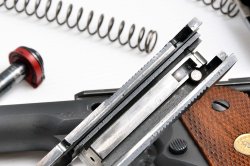
1911 Colt model has a very solid structure entirely made in steel, using few pieces that do not tend to break, unless it is after a long or wrong maintenance of the mechanic parts. 1911 Colt Government is a semi-automatic gun in single action with an external hammer, made like the classical and reliable Colt breech block system with short barrel recoil, enabled with indented pivots on the upper side of the barrel and on top of the frame. The breech block works with a barrel link on the barrel and it is attached to the frame with a barrel support of the slide stop. Colt has applied some useful innovations over the years: the aiming devices are bigger, allowing faster acquisition of the target.
In the 80s, the gun was being manufactured with an automatic safety of the firing pin. In order to make it more reliable, the ejection port and the opening of the magazine have been re-designed and they now show small flare indent. If everything is set perfectly, along with an appropriate cartridge, the gun is as precise as precision riffle and it enables very concentrated groups of shots from 25 meters of distance.
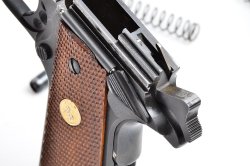
Everything seems perfect so far but there are a few other aspects to consider. In order to have tactical advantage, 1911 Colt (but really, this can be applied for every gun) it needs to be carried with a cartridge in the barrel chamber. This means that you need to use “condition one”: the cartridge is in the chamber barrel, the hammer is cocked and the safety is on. The shooter needs to extract and deactivate the manual safety with their thumb, and they need to remember to activate the safety when they put the gun back in the holster. To avoid slip-ups in stressful situations, these maneuvers need to be done very fluently, as a result of a good training.
The single-column magazine which makes the grips thinner and therefore, more comfortable, can take up to 7/8 cartridges due to a big caliber, in this way limiting its autonomy of fire. Statistics show armed conflicts that last a few seconds and usually involve very few shots but sometimes more cartridges mean a better outcome. As far as mechanics is concerned, in order for it to function perfectly, you need to turn to a skillful gunsmith to adjust some pieces of the gun. Like many older models, a longer use needs constant maintenance of certain pieces on the frame through rolls that tend to get loose. The last but not the least, is the weight of the gun, with the magazine that comes with it, which is above the norm. It is especially heavy if we consider its autonomy of fire.
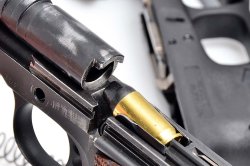
Beretta 92 series is a semi-automatic gun with an external hammer, based on the system of short recoil of the barrel originally from Walter P38 which leans on the falling locking block controlled by a plunger. The block is between two bottom lugs located under the barrel. The trigger action system allows both single and double action. The frame is made of light aluminum called Ergal. The double-stack column magazine has a capacity of 15 cartridges. These characteristics, very rare in the past, ensured this gun a lot of success even with the American military and many other military and police units around the world.
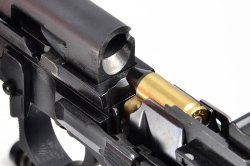
Beretta 92 series have a very unique design of this “Gardonese” factory, famous for their exposed barrel guns.
Beretta 92 series is famous for its reliability. It doesn’t require any gunsmith interventions and you can keep it out of its box and have no problems. The cartridge presentation is practically aligned with the barrel and the slide with a large upper milling which makes the gun less likely to malfunction. The falling locking block system in shooting, allows the gun to remain aligned with the frame, eliminating, to a certain point, the recoil. Comparing it to the older 1911 Colt, the double-stack column magazine of Beretta 91 series, combined with a smaller caliber, allows bigger autonomy of fire, which can be very useful in some situations. The great mechanical works, together with proportional aiming devices make Beretta 92 more precise than most self-defense guns.
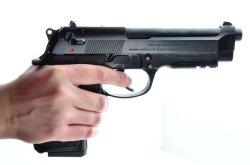
Even Beretta has its downsides. One of the problems of 92 series is the grips that are rather large. 92 series ergonomics does not work well for those with medium-small hands. These shooters will have difficulties to reach the trigger, especially if the first shot was in double action. By trying to block the unwanted shots, double action shooting is blocked for the carry or use without a cartridge in the chamber barrel, which requires cycling of the slide, cocking of the hammer and then reducing the shooting weight.
On the trial model, double action shooting with Beretta 92 required strength of 4 to 6 kilos, with a travel of about 15 mm. The trigger reach is 7 cm away from the back side of the grips. These measures need to be considered when you consider choosing this gun.
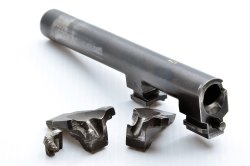
Also, we think that the manual safety of the hammer drop needs to be changed. The mechanics of the gun make this device necessary because it takes the hammer in a rest position once the gun is armed and the slide cycled. When it is activated, the hammer drop catch stays down deactivating the trigger mechanism. We think that these guns need a safety used in the model G that works only as a hammer drop catch and when activated returns automatically up and it gets deactivated. In this way the safety could bring the hammer back to the rest position without the fear of activating the safety in stressful conditions and perhaps not being able to shoot. For those who hate hammerless guns, like those with a striker system, we remind you that it is normal to see simple mistakes even in practice-shootings, let alone in an armed conflict – shooters reinsert the guns with the scary external hammer loaded, back to the holster. To avoid mechanical problems, we advise you to change the falling locking block and the recoil spring after about 5000 shots.
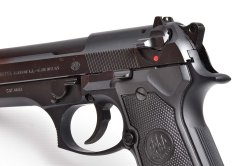
The latest arrival, Glock, boasts a series of technological simplifications and innovations that, even though not accepted by everyone, have set an example. Today, many manufacturers try to copy the Glock mechanics and improve the Austrian project.
It has been 30 years after it appeared on the market so Glock is definitely not new but the initial idea was genius, without doubts. The pistol, other than being a platform from which you can easily design other models, from full size to sub compact, available in many calibers, has a reasonable price without compromising quality and reliability of the materials used. It is made out of only 33 pieces and they don’t get broken easily.
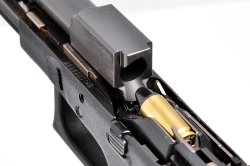
The polymeric frame, which doesn’t require special grip plates on the grips, limits the width of the grips themselves. Even the shooters with smaller hands can easily get a good grip of the Glock. The double-stack column magazine of 17 model in 9 parabellum caliber has the capacity of 17 rounds. Glock is a semi-automatic pistol with a simple and efficient system of short recoil of the swing barrel, modified Browning type. The link between the barrel and the breechblock is on the bottom of the prismatic profile of the barrel, which gets blocked in closing by the ejection port.
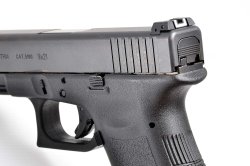
The guns with a flying firing pin have a resistance of the trigger pull weight from 2.5 kilos to over 4 kilos. There are special kits that allow you to lower or increase the trigger pull weight, adapting it to your needs. As usual, following security measures, as the guns don’t shoot by themselves, and in order to avoid any incidents, all you need to do it not to touch the trigger if you don’t want to shoot and to remember that the gun is always loaded. Glock is a gun that can be used “out of the box” as it doesn’t require any type of maintenance or gunsmith adjustments. We shouldn’t say this but we have tested the Glock system ourselves, and we can tell you that even the minimal support points between the frame and the slide ensured a continuous working after thousands of shots, without the need of cleaning. The feared case ruptures of the frame, even though rare, happen only due to wrong loadings of the home-made cartridges or in guns that have shot more than 300.00 rounds. We don’t believe that is the standard experience of the majority of the shooters.
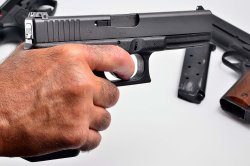
Periodically, we would advise the replacement of the small trigger spring, which will cost you a few cents, and the recoil spring. These parts can last more than 20. 000 shots but there’s not a safe way to know it. If we want to find Glock downsides, two come to our minds: the front sight in some cases tends to slide off. The solution to this problem would be to block the front sight with any product available (an appropriate kind of glue) or to replace it with other options and upgrades. The second downside can be eliminated if you mind the safety rules of the general state of the gun. To disassemble the gun, Glock requires the execution of dry fire. This procedure is not always safe, for example if you are in a field, you could cause incidents, but it is necessary for the gun disassembly.
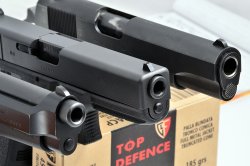
As far as the longevity of the guns is concerned, there have been many debates on what is the most resistant model. The guns are thermo-ballistic devices that need to resist the force of the cartridges, with metals that can endure intense heat increase and decrease. The clashing parts, and bendable and compressible springs all add up to possible problems. Bad manufacturing of any piece of the gun can lead to premature breaking of the gun after just a few shots. However, many guns work long after the deadline estimated by statistics. So there is no way of knowing which gun is more resistant but we can claim that the modern guns, no matter how you handle them, usually never have a short life.
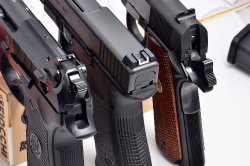
As far as the actual shooting is concerned, all these guns are very precise, even though Colt gets better results in precision-shooting. The winning grips are without a doubt the old Colt’s with excellent frame dimensions which can receive only a single-columned magazine. Even Colt’s trigger travel, in single action, is the best one. The recoil that is the easiest to control is that of 9 mm guns, with a slight advantage of Beretta. .45 ACP Colt can be tamed after long trainings, even if you’re using the exuberant cartridge where the 230 grains of the bullet are noticed. As far as first shot speed is concerned, together with drawing the gun from the holster and discharging the magazine (we limited all magazines to 7 cartridges) Glock, at least in our testing, was the absolute winner. Colt is slower due to its deactivation of the manual safety and Beretta has a longer trigger travel compared to the Austrian gun.
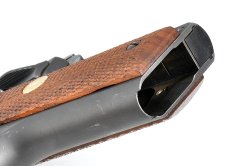
So the question is: is 1911 Colt a dinosaur of the modern era? If you consider its success even in the recent years, one would beg to differ. Colt system is used for shooting guns and personal defense weapons. .45 ACP caliber is slow and heavy and so it gives a sense of safety to the shooter, once they learn to manipulate the gun and control the recoil. Once the shooter learns to control it, it is easily handled and it has a very good trigger pull that could be brought to weight bellow one kilo. Especially if you are considering personal and home defense, Colt has a bright future. Thanks to its external hammer, single action shooting and manual safety that requires adjustments, we don’t recommend it to those who don’t have a lot of time to spare at the shooting range. The substantial weight of 1911 that gets to 1.360 grams with 7 cartridges in the magazine can be an issue if you need to carry it for longer periods of time.
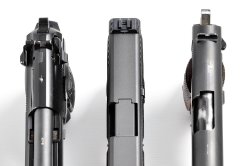
Moving on to 92 Beretta, we can say that, even though it is not the newest gun on the market, it remains a strong platform for an updated version that should try to limit grips’ dimensions, by changing the frame materials, the manual safety and perhaps some mechanic solutions. The Gardonese manufacturer, even without summoning car designers, would easily find technicians able to modify these aspects and to update the gun that is starting to feel a bit dated. The hammer drop catch, despite its problems, increases the safety of gun manipulations, comparing to Colt system and it makes us recommend it to the less experienced shooters. The choice, however, needs to be made depending on the grip dimensions which require larger hands. 92 Beretta has a magazine that can take up to 15 rounds and the total weight in that case is 1.145 grams. It is not exactly the lightest gun.
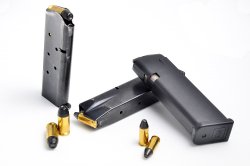
Finally, the last arrival is of course, more modern and tactical. We believe that it is superior to the other two for its easy use and the fast defense shooting. The safety it provides to a shooter in stressful conditions, not requiring any maneuvers that require reasoning, is the best one. Glock 17 can be used in operative and sports shooting. Thanks to many products on the market, it is possible to upgrade the trigger travel, some internal parts, and the aiming devises. Once you remember that the gun is always charged and that you shouldn’t push the trigger unless you want to shoot, Glock is the most tactical of the three.
The more moderated weight, which amounts to only 905 grams with 17 rounds, makes it easier to carry for longer periods of time.
Beretta 92
Technical information
| Manufacturer | Fabbrica d’armi
Pietro Beretta S.P.A. Via Pietro Beretta, 18 25063 Gardone Valtrompia Brescia, Italy |
| Model | 92/98 |
| Caliber | 9mm parabellum o
9x21mm |
| Operating system | Semiautomatic pistol,
short recoil Walter system |
| Barrel | 125 mm (4.921”) |
| Magazine | Staggered, 15 round
capacity |
| Trigger system | Double and single
action |
| Safety | Manual safety, firing
pin block, half cock |
| Sight | Front sight integral
with slide, rear sight dovetailed to slide |
| Materials | Carbon steel slide, aluminum
alloy frame, plastic grip |
| Lenght | 217 mm (8.5”) |
| Weight (if empty) | 960 gr (33.86
oz) |
| Trigger reach (double
action) | 72 mm (2.83”) |
Trigger reach (single action) | 64 mm (2.5”) |
Trigger weight | 4,8 Kg (10.58 lb) DA 2,3 Kg (5.07 lb) SA (at least of model being tested) |
Slide thikness | 28 mm (1.10”) |
Grip thikness | 35mm (1.37”) |
Trigger travel | 20 mm (0.78”) |
Grip circumference | 148 mm / 157 mm (5.82”/ 6.18) |
Trigger Hang-up | 5 mm (0.197”) |
Colt 1911
Technical information
| Manufacturer | ColtColt’s Manufacturing Company LLC P.O. Box 1868 Hartford, CT 06144 USA |
| Model | 1911 Government |
| Caliber | .45 ACP |
| Operating system | Semiautomatic pistol, short recoil Browning system |
| Barrel | 127mm (5”) |
| Magazine | Single column, 7
round capacity |
| Trigger system | Single action only |
| Safety | Manual safety, grip safety, half cock |
| Sight | Fixed front and rear
sight |
| Materials | Carbon steel, walnut
wood grips |
| Lenght | 212mm (8.38”) |
| Weight (if empty) | 1,134 Kg(40 oz) |
| Trigger reach | 62mm (2.44”) |
Trigger weight | *1050 Kg (2.315lb) with no over travel trigger |
Slide thikness | 23,5mm (0.925”) |
Grip thikness | 33mm (1.299”) |
Trigger travel | * 2mm (0.079”) |
Grip circumference (min-max) | 135mm (5.315”) |
Trigger Hang-up | * 2mm (0.079”) |
Note | * the pistol we tested was enhanced by well-known Italian gunsmith Roberto Dallera - ADC Dallera Custom |
Glock 17
Technical information
| Manufacturer | Glock Ges m.b.H. A-2232 Deutsch Wagram, Austria |
| Model | 17 |
| Caliber | 9mm parabellum o 9x21mm |
| Operating system | Semiautomatic pistol, short recoil Browning system modified |
| Barrel | 114mm - (4.48”) |
| Magazine | Staggered, 17 round
capacity |
| Trigger system | Safe action - stryker
system |
| Safety | Automatic on trigger, firing pin lock |
| Aiming devices | Fixed front size, fixed or adjustable rear sight |
| Materials | Carbon steel slide,
polymer frame |
| Lenght | 204mm (8.31”) |
| Weight (if empty) | 625gr (22.04 oz) |
| Trigger reach (safe action) | 70mm (2.75”) |
Trigger weight | 2,5 kg (5,5 lb) |
Slide thikness | 25 mm (0.98”) |
Grip thikness | 29 mm (1.14”) |
Trigger travel | 6 mm (0.23”) |
Grip circumference (min-max) | 144 mm / 155 mm (5.66” / 6.10) |
Trigger Hang-up | 4mm (0.157”) |



